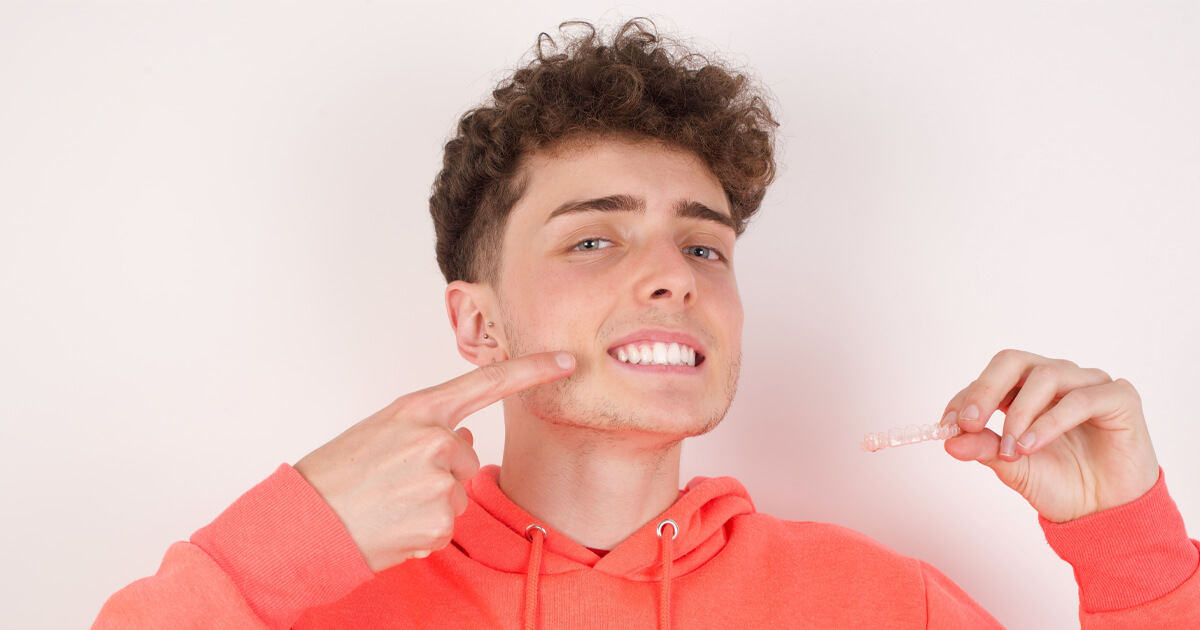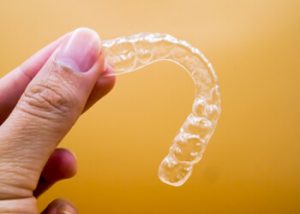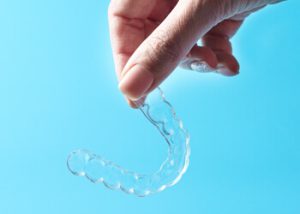Invisalign for Overbite — Can the Treatment Correct It?

Individuals with an overbite have more treatment options available to them than in the past. Previously, braces were commonly used to fix this condition; however, less invasive treatments such as Invisalign are becoming increasingly popular nowadays.
Invisalign works by customising clear aligners specifically for you that will help gently straighten your teeth into their corrected positions. Not only does Invisalign take significantly less time to show results when compared to traditional braces, but they are also less visible and much more comfortable!
People usually ask us if Invisalign can correct an overbite or crossbite, and we typically answer with a maybe.
It depends on the person’s individual condition. However, there is some general information that might give you a better idea of whether these will help you. We’ll go over that briefly in this article.
 What is an overbite?
What is an overbite?
Most of us have a small amount of overlap between our upper and lower teeth when we close our jaws. In most cases, the lower front teeth are located behind the upper front teeth. A gap of 3 millimetres is considered healthy. If there is less than a 3mm distance between the upper and lower teeth, and they overlap, then this is called an overbite or deep bite.
An overbite can lead to different associated problems, such as:
- Early teeth deterioration.
- Jaw pain is caused by strained muscles and jaws.
- Enamel loss from too much friction can cause cavities and gum diseases.
- Issues with speaking are caused by incorrect muscular or dental structure.
- Trouble eating or chewing normally.
- When the bottom teeth rub against the roof of the mouth, it can cause migraines.
What causes an overbite?
Genetics is one of the factors that determine whether an individual will develop an overbite, but more commonly, it is caused by poor dental practices.
Certain behaviours in early childhood, such as tongue thrusting, thumb-sucking, and nail-biting, can all contribute to this condition.
Types of Overbite
An overbite is caused by either dental or skeletal problems.
Dental overbites occur when teeth are not aligned properly, while skeletal overbites suggest the jaw is misaligned. There are two primary types of overbites; vertical and horizontal.
 There are two types of overbites: vertical and horizontal.
There are two types of overbites: vertical and horizontal.
A vertical overbite happens when your top teeth significantly overlap with your bottom teeth, while a horizontal overbite results from poor alignment between the upper and lower front set of teeth, which also gives the appearance of “buck teeth”.
The approach your dentist takes to treating your overbite, as well as the recommended treatment plan, will depend on both the underlying cause of the condition and the type of overbite you have.
Overbite and Crossbite
A condition similar to overbite is called a crossbite. It happens when some of the upper teeth sit inside your lower teeth instead of outside them.
The lower teeth that lie in front of the front upper teeth can be at either the front or back portion. Crossbite is also sometimes referred to as an underbite.
Does Invisalign treatment fix an overbite?
Invisalign can be effective in correcting overbites and crossbites for most people. Each person’s smile is different, so success rates will vary from case to case. However, Invisalign usually produces good results for mild to moderate cases.
Invisalign is an orthodontic device used by adults, teenagers, and children. They are entirely customised for each patient; we laser-cut them down to precision in order to fit your teeth snugly. This makes Invisalign a perfect option for people of all ages. The duration of use varies depending on the case, but generally speaking, results are visible within six months.
 Invisalign is an effective treatment for patients of all ages and can be completed in a shorter time frame than traditional braces. However, some factors, such as age and patient compliance, can impact the final outcome.
Invisalign is an effective treatment for patients of all ages and can be completed in a shorter time frame than traditional braces. However, some factors, such as age and patient compliance, can impact the final outcome.
If you have an overbite, it’s best to seek treatment during adolescence. As we age, our teeth become more set in place and, therefore, harder to fix. The severity of your overbite also determines the necessary steps for treatment.
For older patients requiring Invisalign for overbite correction, we prefer using elastics in addition to Invisalign aligners. These elastics are similar to braces and work by slowly moving the bottom teeth forward and pushing the top teeth back–ultimately correcting the overbite.
Precautions with Invisalign
Invisalign is a good choice for people who want to straighten their teeth because it is gentle on their gums. Invisalign is made from plastic, not metal, like some other choices, so it is more comfortable. You also do not have to take as many precautions with Invisalign as you do with some other choices, but you should remove your Invisalign during sports activities.
Why Invisalign is better than other conventional treatments for overbite?
To change the alignment of your teeth, we need to apply pressure over time to achieve the wanted appearance.
In the past, treatment options to correct an overbite were limited, and people would have to get metal braces or have surgery. Braces made of metal or wire are still common, but they frequently cause problems like discomfort and pain, difficulty cleaning teeth, eating restrictions, and irritation.
Moreover, braces are unappealing to look at and cause a lack of confidence in adolescents and children.
Tooth extractions, in coordination with metal braces, are sometimes used to fix an overbite. We do this by moving the upper front teeth back into the space created by the removed tooth. Not only can this be painful for people, but it can also result in other dental problems later on.
Tips for taking care of Invisalign
Only take your aligners out for eating, drinking, and cleaning
Although you can remove your aligners, it’s not advisable to take them out whenever you want. To maintain progress with your treatment plan, you should wear your aligners for at least 20-22 hours daily, which leaves a 2-4 hour window for other activities such as eating meals and drinking non-water beverages.
 Store your aligners properly
Store your aligners properly
Every time you take your Invisalign aligners out – for eating, drinking, or brushing your teeth- it is essential that you store them in the provided case immediately. Avoid losing your aligners (or spending money to replace them) by keeping them safe in their designated storage case.
Losing or damaging an aligner will cause delays in your treatment while you wait for a new one, so it’s possible that your treatment might take even longer than expected.
Clean your aligners daily
If you don’t clean your aligners on a regular basis, then you’re more likely to have bad breath, plaque buildup, and cavities. Your aligners can last well throughout the treatment if you follow a daily hygiene routine.
Don’t skip dental cleanings
Easily visit the dentist for cleanings by wearing removable aligners–simply take them out. There’s no need to remove any wires. Just continue with your regular oral hygiene routine, including dental cleanings, so that we can address problems early and keep your oral health from declining.
Do you have more questions on Invisalign? Book an appointment with your friendly dentists at My Local Dentists and get professional advice on Invisalign. Book an appointment at any one of our five conveniently located clinics near you.
References
Can Invisalign fix an overbite?
https://www.healthline.com/health/dental-and-oral-health/can-invisalign-fix-overbite
What is an overbite?
https://www.webmd.com/connect-to-care/teeth-straightening/what-is-an-overbite
Invisible aligners for teeth
https://www.webmd.com/oral-health/invisible-orthodontic-aligners#1
